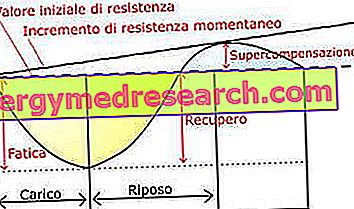The drinks include a large number of liquids called accessories or even complementary, which is why "the National Research Institute for Food and Nutrition (INRAN)" and "the Italian Society of Human Nutrition (SINU)" did not frame them all inside the 7 food groups.
Beverage classification
Drinks can be classified into:
- Alcoholic beverages
- NON alcoholic drinks

Alcoholic beverages
Wine: wine is a hydro-alcoholic liquid obtained from the fermentation of fresh or slightly dried grape must. It is a drink that exploits the fermentative action of yeasts from the Saccharomyces family that transform sugars into ethyl alcohol and carbon dioxide. It can be red (or black), white or rosé, depending on the presence or absence of the pomace during vinification. A further classification of the wine can be carried out on the basis of the TARGET for consumption, that is: from cutting, from table (including IGT - typical geographical indication), produced in specific regions - VQPRD (of which DOC are part - designation of origin controlled and DOCG - denomination of controlled and guaranteed origin) and special wines (dessert).
Beer: it is the most consumed alcoholic beverage in the world; it is obtained by alcoholic fermentation by Saccharomyces cerevisiae and carlsbergensis from musts prepared with barley malt, water, flavoring and hop inflorescences. Based on the alcohol content, the beers can be classified as: non-alcoholic, normal (3ml / 100ml), special (3.5ml / 100ml), double malt (not less than 4ml / 100ml).
Distillates and liqueurs: distillates are prepared by distillation of certain alcoholic beverages or by fermentation and subsequent distillation of vegetable products rich in carbohydrates; the gradation varies between 38 and 60 °. The liqueurs are prepared starting from alcohol or distillates by adding sugar, essences, herbs, water and sometimes even dyes; the alcohol content varies between 20 and 50%. They are classified as: fruit liqueurs, bitter and semi-liqueur liqueurs, essences based liqueurs.
Nerve drinks
Coffee: coffee is a nervine drink obtained by hot infusion of coffee powder. The plant species from which the grain is obtained (subsequently roasted and pulverized) are the Coffea robusta and the Coffea arabica . Coffee production is based on some steps: harvesting, extraction of the seed from the fruit, selection of seeds and roasting (before consumption, of course, also grinding). Coffee is a drink that contains caffeine, an alkaloid with exciting effects on the body.
Tea: tea or tea is a drink obtained by hot infusion of Thea sinesis or Thea assamica or Camelia Tea leaves. There are various types of tea: green tea, black tea, oolong tea, scented tea. It is also possible to find instant soluble, dened and ready-to-eat tea; tea alkaloids are mainly made up of caffeine (or theine), theophylline and theobromine which act on the central nervous system as stimulants.
Liquid chocolate: liquid chocolate, also known as "in the cup", is the result of mixing between: bitter cocoa powder, milk and possibly sugar. The chocolate in the cup, in addition to a drink, is also a proper food because it brings: fats, sugars, proteins, mineral salts, vitamins and antioxidants.
Alcohol-free drinks
Drinks: they are distinguishable drinks in 4 groups:
- Soft drinks sold with the name of one or more fruit juices: fruit juice NOT <12%
- Beverages sold with the name of a fruit NOT a juice: eg. chinotto, cedrata etc.
- Beverages sold with the invented name: it includes a wide range of beverages, such as cola, bitters, tonic waters, etc .; also contain plant extracts and caffeine.
- Gaseous: these are "simple" drinks made up of water, sugar, lemon essence, citric or tartaric acid, and carbon dioxide (without coloring agents).
Fruit juices: these are NON-fermented beverages that maintain the aroma, flavor and color of the extraction raw material; they are obtained by mechanical extraction of the juice from the fruits. It is appropriate to distinguish:
- Fruit juice: which contains 100% natural juice
- The nectar or fruit juice and pulp: obtained by adding water and sugar to a natural or concentrated juice (they are drinks that on average contain 40-50% of fruit).
Syrups: They are obtained from fruit juices or vegetable extracts by adding a high percentage of sugar that varies from 60 to 70%.
Bibliography:
- Food and health –S. Rodato, I. Gola - Clitt - pag 202: 212



